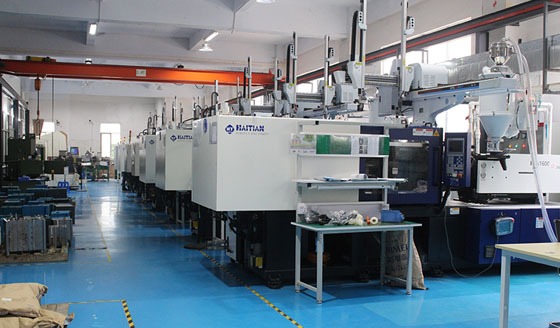Mold Design & Making
What exactly can we do
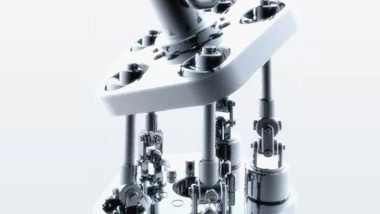
Drawing design and die structure optimization
>Provide samples, drawings and requirements, and provide drawing optimization and design support and efficiency
>Good at optimizing injection mold structure and providing high-efficiency mold development services
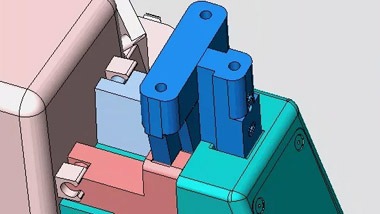
Mold manufacturing, mold sample development
>According to the requirements of product structure and product performance, reasonably design the mold structure and cooperate with 3D software for mold flow analysis
>Use 3D laser plate printing to make your samples meet the requirements at one time
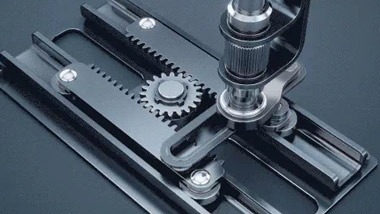
Product mass production of injection molded parts
>Batch production after sample confirmation
>With a complete production management team and equipment, it can deliver on time and quickly as soon as one week

External model test, iteration and collaboration
>Install and adjust the mold, analyze and solve the common defects of injection molding parts
>Provide efficient collaborative support for mold improvement / perfection
Mold Making Processing capacity
Choose us, these problems will be solved

Strong new product design ability
- We are good at product structure optimization, works closely with many world design institutions, and provides more cost-effective design solutions for the top 500

Complete production team
- With more than 30 skilled and experienced production and processing teams, we can deal with all kinds of emergencies and product injection defects in a short time
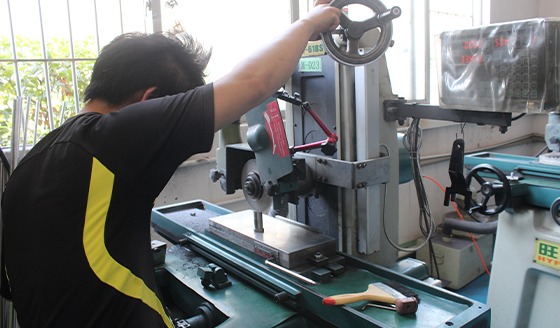
10+ years of injection mold making experience
- It has accumulated experience in mold development, design and injection molding in dozens of industries such as electronics, intelligence and new energy
Injection Mold Equipment display
Accelerate new product development and ensure continuous and stable injection molding production





Finished Plastic Part Products Display
China Precision reputation witness
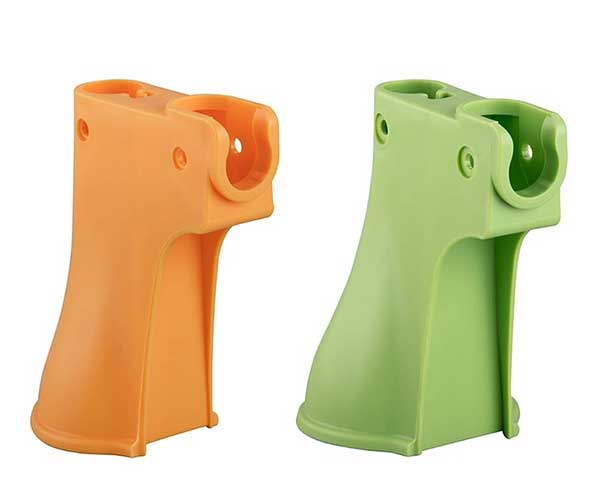

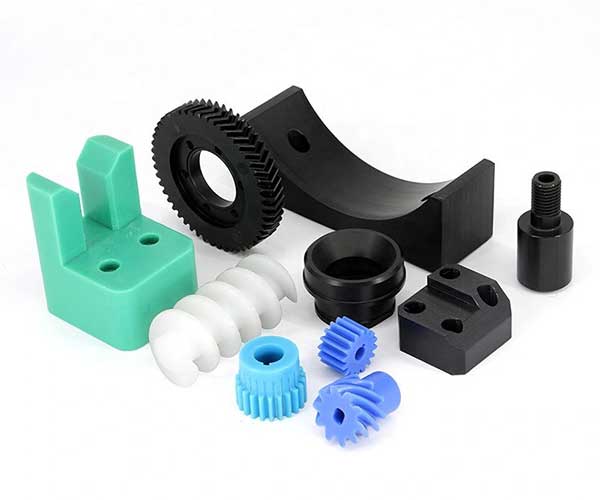
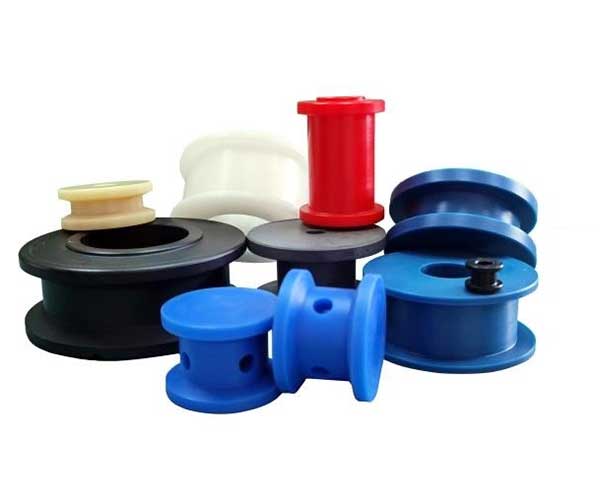
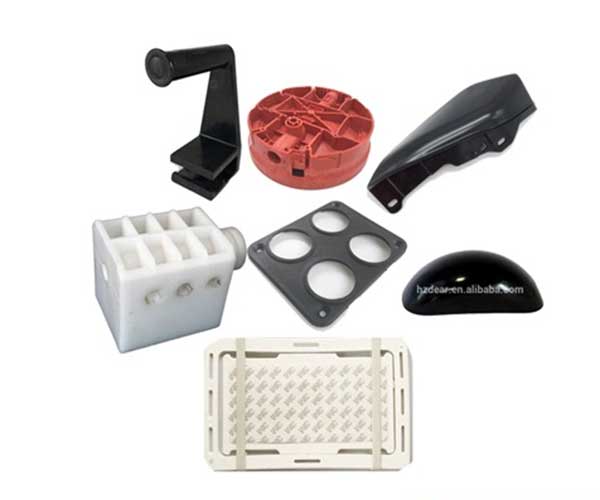
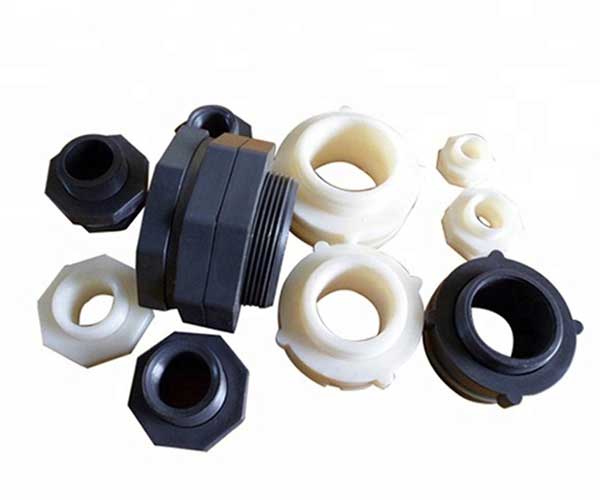
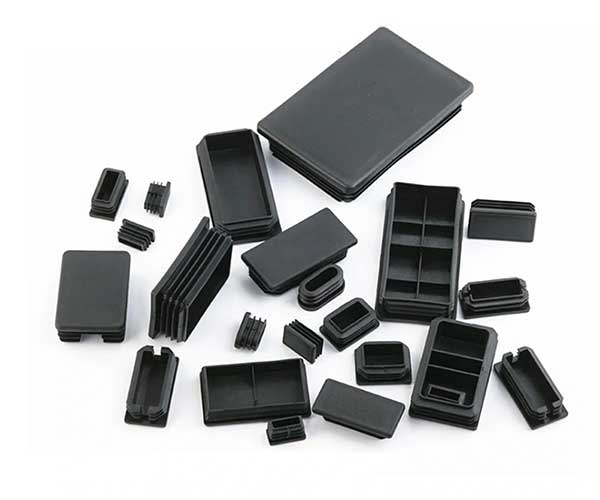
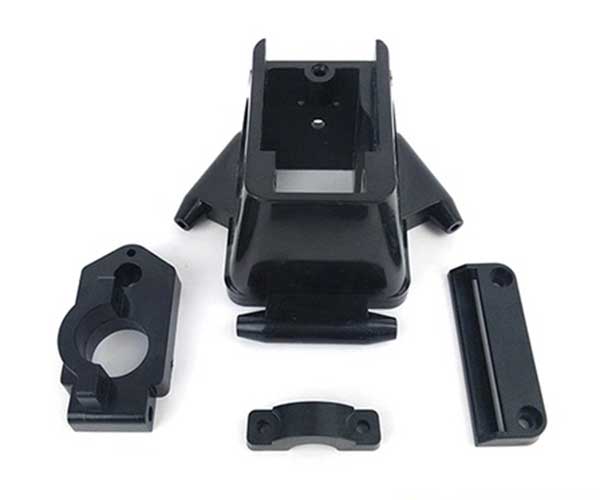
FAQs List of Plastic Injection Mold Services
An injection mold is a tool used to produce plastic parts through the injection molding process.
An injection mold is a tool that allows for the production of parts by injecting molten material, usually plastic, into a shaped cavity. The material then cools and hardens, forming the desired shape of the part. Injection molding is a common manufacturing process that can produce thousands of identical items in a short time.
To make an injection mold, a mold-maker needs to design and machine a metal mold, usually made of steel or aluminium, that has the features and dimensions of the part to be produced. The mold has two halves that open and close, and one or more cavities where the material is injected. The mold also has cooling lines that circulate water or oil to reduce the cooling time of the material.
Injection molding requires careful consideration of the design of the part, the material of the part and the mold, and the properties of the molding machine. Some factors that affect the quality and cost of injection molding are: the number of parts to be produced, the complexity and geometry of the part, the type and amount of material used, the temperature and pressure of the injection process, and the durability and maintenance of the mold.
Injection molds can be made from a variety of materials including steel, aluminum, and copper alloys.
Injection molding is a process that can produce plastic parts with complex shapes and high dimensional accuracy. Injection molding involves injecting molten plastic into a mold cavity, where it cools and solidifies into the desired shape. The mold cavity is usually made of metal, such as steel or aluminum, and can be designed to produce multiple parts in one cycle.
There are many types of plastic materials that can be used for injection molding, depending on the properties and requirements of the final product. Some of the most common injection molding materials are:
– Polypropylene (PP): This is a versatile and low-cost material that has good resistance to chemicals, heat, and fatigue. PP is widely used for injection molding applications such as packaging, containers, automotive parts, household appliances, and medical devices.
– Acrylonitrile Butadiene Styrene (ABS): This is a tough and impact-resistant material that has good dimensional stability and surface finish. ABS can be injection molded in various colors and can be blended with other materials to enhance its properties. ABS is commonly used for injection molding applications such as toys, electronics, automotive parts, and helmets.
– Nylon Polyamide (PA): This is a strong and durable material that has good resistance to abrasion, chemicals, and high temperatures. Nylon can also be reinforced with fibers or fillers to improve its strength and stiffness. Nylon is often used for injection molding applications such as gears, bearings, bushings, and fasteners.
– Polycarbonate (PC): This is a transparent and rigid material that has excellent optical properties and impact strength. PC can also withstand high temperatures and UV exposure. PC is suitable for injection molding applications such as lenses, lighting fixtures, medical devices, and protective equipment.
– Polyoxymethylene (POM): This is a hard and slippery material that has good lubricity and resistance to wear and friction. POM also has low moisture absorption and high dimensional stability. POM is ideal for injection molding applications such as pumps, valves, gears, and connectors.
These are some of the most common materials used to make injection molds, but there are many other options available depending on the specific needs of the project. Injection molding is a flexible and efficient method to produce plastic parts with high quality and functionality.
The choice of material for an injection mold depends on factors such as the required level of precision, production volume, and cost.
Injection molding is a widely used manufacturing process that can produce plastic parts with complex shapes and high precision. However, not all plastic materials are suitable for injection molding. There are many factors that affect the choice of material for an injection mold, such as:
– Shrinkage rate: The degree to which the plastic part contracts after cooling. Different materials have different shrinkage rates, which can affect the dimensional accuracy and stability of the part. The mold design should account for the shrinkage rate of the material to avoid defects such as warping, cracking, or deformation.
– Fluidity: The ease with which the molten plastic flows into the mold cavity. Fluidity depends on the viscosity, temperature, and pressure of the material. High fluidity materials can fill thin and complex cavities, but may also cause flash or overflow. Low fluidity materials require higher injection pressure and temperature, but may result in incomplete filling or short shots.
– Crystallinity: The degree of order and orientation of the polymer chains in the plastic material. Crystalline materials have higher melting points, stiffness, and strength, but lower impact resistance and transparency than amorphous materials. Crystalline materials also have higher shrinkage rates and lower fluidity than amorphous materials.
– Heat-sensitive plastics and easily hydrolyzed plastics: Some plastics are sensitive to heat or moisture, which can degrade their properties or cause chemical reactions during injection molding. For example, PVC can release corrosive gases when heated, which can damage the mold and the machine. Nylon can absorb water from the air, which can affect its fluidity and strength. These materials require special handling and drying before injection molding.
– Stress cracking and melt fracture: Some plastics are prone to cracking or breaking under stress or strain, which can compromise the quality and performance of the part. Stress cracking can occur when the plastic part is exposed to chemicals, solvents, or environmental factors that cause swelling or shrinkage. Melt fracture can occur when the molten plastic is subjected to high shear stress or pressure during injection molding, which causes irregularities or distortions on the surface of the part.
– Thermal performance and cooling rate: The ability of the plastic material to withstand high temperatures and cool down evenly. Thermal performance affects the cycle time, energy consumption, and dimensional stability of the injection molding process. Materials with high thermal conductivity can cool down faster and more uniformly, but may also require higher injection temperatures and pressures. Materials with low thermal conductivity may retain heat longer and cause warping or shrinkage.
– Hygroscopicity: The tendency of the plastic material to absorb moisture from the air or other sources. Hygroscopic materials can affect the fluidity, shrinkage, strength, and appearance of the plastic part during injection molding. Hygroscopic materials should be dried before injection molding to remove excess moisture and prevent defects such as bubbles, voids, or discoloration.
These are some of the main factors that determine the type of material used for an injection mold. Depending on the application and requirements of the product, different materials may have different advantages and disadvantages. Therefore, it is important to consider these factors carefully and choose the most suitable material for each injection molding project.
Injection molds are typically made using computer-aided design (CAD) software and then machined using specialized equipment such as CNC machines.
Injection molding is a process of producing plastic parts by melting and injecting polymer resin into a mold. The mold is a metal or steel cavity that has the shape and features of the desired part. The resin is fed into a heated barrel, where it is mixed and pushed by a screw or a plunger into the mold cavity. The resin then cools and solidifies inside the mold, forming the part. The mold is then opened and the part is ejected by pins. Injection molding is widely used for mass-production of identical parts with good tolerances, such as bottle caps, toys, car components, and electronic enclosures. Injection molding can use various thermoplastic and thermosetting polymers, as well as additives for coloring or reinforcing the material.
Common types of injection molds include single-cavity, multi-cavity, family, and hot runner molds.
Injection molding is a manufacturing process for producing parts by injecting molten material into a mold, or mould. Injection molds are the tools that shape the molten material into the desired form. There are many different types of injection molds, depending on various factors such as the feeding system, the number of cavities, the mold plate, and the unscrewing mechanism. Some of the common types of injection molds are:
– Cube mold: A type of injection mold that has two or more faces with different cavities on each face. The mold rotates around a central axis to fill each cavity in turn. This allows for faster production and reduced cycle time.
– Die casting: A type of injection mold that uses metal as the material instead of plastic. The metal is injected into a steel mold under high pressure and then solidifies. Die casting is used for making parts with complex shapes and high dimensional accuracy.
– Gas-assisted injection molding: A type of injection mold that uses pressurized gas to create hollow sections in the molded part. The gas is injected into the molten plastic after it enters the mold cavity, creating a bubble that pushes the plastic to the walls of the cavity. This reduces the weight and warping of the part, and improves its surface quality.
– Liquid silicone rubber injection molding: A type of injection mold that uses liquid silicone rubber as the material instead of plastic. The liquid silicone rubber is injected into a heated mold and then cured by heat or radiation. Liquid silicone rubber injection molding is used for making parts with high flexibility, durability, and biocompatibility.
– Metal injection molding: A type of injection mold that uses metal powder mixed with a binder as the material instead of plastic. The metal powder-binder mixture is injected into a mold and then heated to remove the binder and sinter the metal particles. Metal injection molding is used for making parts with high strength, density, and complexity.
– Micro injection molding: A type of injection mold that uses very small amounts of material (less than 1 gram) to produce very small parts (less than 1 millimeter). Micro injection molding requires special equipment, precision, and control to achieve high quality and accuracy.
– Reaction injection molding: A type of injection mold that uses two or more reactive components as the material instead of plastic. The components are mixed and injected into a mold where they react and cure to form a solid part. Reaction injection molding is used for making parts with low density, high impact resistance, and complex shapes.
– Thin-wall injection molding: A type of injection mold that uses thin sections (less than 1 millimeter) of material to produce parts with high strength-to-weight ratio and fast cooling time. Thin-wall injection molding requires high pressure, high speed, and precise temperature control to avoid defects and warping.
The lifespan of an injection mold depends on several factors such as the quality of the mold, the material used, and the frequency of use.
The lifespan of an injection mold is the number of cycles it can produce before it fails or deforms. The lifespan depends on various factors, such as the mold class, the material of the mold and the part, the molding conditions, the environment, and the maintenance. The Plastics Industry Association defines five common mold classes based on their life expectancy: Class 101 (+1,000,000 cycles), Class 102 (1,000,000 cycles), Class 103 (500,000 cycles), Class 104 (100,000 cycles), and Class 105 (500 cycles). Class 101 molds are the most expensive and durable, while Class 105 molds are the cheapest and least durable. Molds made of harder materials, such as steel, last longer than molds made of softer materials, such as aluminum. Molds used in clean environments last longer than molds used in dirty or corrosive environments. Molds that are regularly inspected, maintained, and coated last longer than molds that are neglected or damaged. Molds that operate under appropriate conditions, such as temperature, pressure, and speed, last longer than molds that operate under extreme or fluctuating conditions. Molds that produce parts without defects, such as sink marks, flow lines, burn marks, or flashing, last longer than molds that produce parts with defects that indicate or cause mold damage.
The cost of an injection mold can vary widely depending on factors such as the size and complexity of the mold and the material used.
Injection molding is a process that produces plastic parts by injecting molten material into a mold. The cost of an injection mold depends on several factors, such as the size, complexity, type, and number of cavities of the mold. According to some online sources, a simple single cavity injection mold can cost between $1,000 and $5,000, while a large or complex multi-cavity mold can cost up to $80,000 or more. The average cost of a mold that makes a small and simple part is around $12,000. However, the cost of the mold can be distributed among many parts, making injection molding a cost-effective and efficient way to mass-produce plastic parts.
The time required to manufacture an injection mold depends on factors such as the size and complexity of the mold and the availability of materials.
One of the most common questions we receive from our clients is how long does it take to manufacture an injection mold. The answer depends on several factors, such as the complexity of the mold design, the number of cavities, the type of material, the quality standards, and the availability of the mold maker. However, a general estimate is that it can take anywhere from 4 to 12 weeks to complete an injection mold project.
The process of manufacturing an injection mold involves several steps, such as:
– Designing the mold based on the product specifications and requirements.
– Creating a 3D model of the mold using computer-aided design (CAD) software.
– Simulating the mold performance and optimizing the design using computer-aided engineering (CAE) software.
– Fabricating the mold components using computer numerical control (CNC) machines, electric discharge machining (EDM), or other techniques.
– Assembling and testing the mold to ensure its functionality and quality.
– Making any necessary adjustments or modifications to the mold based on the test results.
Each of these steps can take a different amount of time depending on the complexity and precision of the mold. For example, a simple mold with a single cavity and a standard material can take as little as 4 weeks to manufacture, while a complex mold with multiple cavities and a special material can take up to 12 weeks or more. Additionally, some factors that can affect the mold manufacturing time are:
– The availability and experience of the mold maker. A reputable and skilled mold maker can deliver high-quality molds in a shorter time than a less experienced or busy one.
– The communication and collaboration between the client and the mold maker. A clear and timely exchange of information and feedback can help avoid delays and errors in the mold design and fabrication.
– The quality standards and expectations of the client. A higher level of quality and accuracy can require more time and resources to achieve than a lower one.
Therefore, it is important to consider all these factors when planning an injection mold project and to communicate with your mold maker throughout the process. By doing so, you can ensure that your injection mold is manufactured in a reasonable time frame and meets your expectations.
Regular cleaning and lubrication are essential to keep injection molds in good condition. In addition, some molds may require periodic repairs or modifications.
Injection molds are complex and expensive tools that require regular care and maintenance to ensure their optimal performance and longevity. Some of the maintenance tasks that injection mold owners should perform include:
– Cleaning the mold surface and vents after each production cycle to prevent resin buildup and contamination.
– Lubricating the moving parts of the mold, such as ejector pins, slides, and hinges, to reduce friction and wear.
– Inspecting the mold for cracks, corrosion, wear, and damage, and repairing or replacing any defective components as soon as possible.
– Storing the mold in a dry, dust-free, and temperature-controlled environment to prevent rust and mold growth.
– Calibrating the mold temperature, pressure, and injection speed settings to match the material specifications and product requirements.
– Documenting the mold history, maintenance records, and performance data to track the mold condition and identify any issues or improvements.
Injection molds can be repaired through methods such as welding, grinding, and polishing.
Injection molds are essential tools for producing plastic parts with complex shapes and high quality. However, they are also subject to wear and tear, damage, and defects that can affect their performance and lifespan. Therefore, it is important to know how to repair injection molds when they encounter problems.
There are different methods of repairing injection molds, depending on the type and severity of the issue. Some common methods are:
– Welding: This involves using a filler material to join the broken or cracked parts of the mold. Welding can be done by hand or by machine, and it requires careful preparation and execution to avoid distortion, cracking, or weakening of the mold. Welding is suitable for repairing small cracks, holes, or gaps in the mold surface or edges.
– Brazing: This is similar to welding, but it uses a lower melting point filler material that does not fuse with the base metal of the mold. Brazing can create a strong bond between the mold parts, but it may also leave a visible seam or color difference. Brazing is suitable for repairing larger cracks, holes, or gaps in the mold surface or edges.
– Machining: This involves removing the damaged or defective part of the mold and replacing it with a new one. Machining can be done by milling, drilling, grinding, or cutting, and it requires precise measurements and alignment to ensure a good fit and function of the mold. Machining is suitable for repairing major damage or defects in the mold structure or geometry.
– Plating: This involves applying a thin layer of metal or coating over the mold surface to improve its appearance, durability, or corrosion resistance. Plating can be done by electroplating, electroless plating, or spray coating, and it requires proper cleaning and preparation of the mold surface to ensure good adhesion and coverage. Plating is suitable for repairing minor scratches, wear, or discoloration on the mold surface.
These are some of the common methods of repairing injection molds, but they are not exhaustive. Depending on the specific situation and requirements, other methods may be more appropriate or effective. Therefore, it is advisable to consult a professional injection mold repair service before attempting any repairs on your own.
Injection molds are typically tested using sample parts to ensure that they meet the required specifications.
How are injection molds tested?
Injection molds are complex tools that are used to produce plastic parts with specific shapes and features. Injection molding is a process that involves injecting molten plastic into a mold cavity, where it cools and solidifies into the desired shape. To ensure the quality and functionality of the plastic parts, injection molds need to be tested before they are used for mass production.
There are different types of tests that can be performed on injection molds, depending on the purpose and requirements of the project. Some of the common tests are:
– Dimensional inspection: This test measures the dimensions of the mold cavity and the plastic part, and compares them with the design specifications. Dimensional inspection can be done using various instruments, such as calipers, micrometers, gauges, or coordinate measuring machines (CMMs). Dimensional inspection can help to verify the accuracy and precision of the mold, and identify any defects or deviations that may affect the quality of the plastic part.
– Material analysis: This test analyzes the chemical and physical properties of the plastic material that is used for injection molding. Material analysis can be done using various methods, such as spectroscopy, microscopy, thermal analysis, or mechanical testing. Material analysis can help to determine the suitability and compatibility of the plastic material with the mold and the product specifications. Material analysis can also help to identify any impurities or contaminants that may affect the performance or appearance of the plastic part.
– Mold flow analysis: This test simulates the flow of molten plastic into the mold cavity, and predicts how it will fill, pack, cool, and shrink. Mold flow analysis can be done using specialized software that models the behavior of the plastic material under different conditions, such as temperature, pressure, injection speed, or cooling time. Mold flow analysis can help to optimize the design and parameters of the mold and the injection molding process, and prevent potential problems, such as warping, sink marks, air traps, or short shots.
– Mold trial: This test involves producing a small batch of plastic parts using the injection mold under realistic conditions. Mold trial can be done using a prototype or a production mold, depending on the stage and scope of the project. Mold trial can help to evaluate the functionality and appearance of the plastic parts, and validate the results of the previous tests. Mold trial can also help to identify any issues or improvements that may be needed for the mold or the injection molding process.
Common problems include flashing, warping, and sink marks.
Injection molding is a widely used manufacturing process that can produce plastic parts with complex shapes and high precision. However, injection molding also has some common problems that can affect the quality and performance of the molded parts. Some of these problems are:
– Flash: This is when excess material flows out of the mold cavity and forms thin projections along the parting line or the ejector pins. Flash can occur due to high injection pressure, low clamping force, worn or damaged mold, or improper venting.
– Short shot: This is when the molten plastic does not fill the entire mold cavity and leaves some sections unfilled. Short shot can occur due to low injection pressure, low melt temperature, insufficient material, or blocked or undersized runners or gates.
– Sink marks: These are depressions or dimples on the surface of the part that are caused by shrinkage of the material as it cools. Sink marks can occur due to thick or uneven wall sections, low cooling rate, high packing pressure, or insufficient cooling time.
– Warping: This is when the part distorts or twists out of shape due to uneven shrinkage or internal stresses. Warping can occur due to non-uniform wall thickness, different cooling rates, excessive injection speed, or poor mold design.
– Burn marks: These are dark or black spots on the surface of the part that are caused by overheating or degradation of the material. Burn marks can occur due to high melt temperature, excessive injection speed, insufficient venting, or trapped air or gas in the mold cavity.
Preventative measures include proper maintenance, using high-quality materials, and ensuring that molds are properly designed and tested.
Injection molding is a widely used manufacturing process that can produce high-quality plastic parts with complex shapes and intricate details. However, injection molding also poses some challenges and risks that can affect the quality, efficiency and profitability of the production. Therefore, it is important to prevent and avoid common problems with injection molds, such as warping, shrinkage, flash, sink marks, short shots, burn marks, jetting, weld lines and bubbles. Here are some tips on how to prevent these problems:
– Warping: Warping occurs when different parts of the molded product cool at different rates, causing them to twist or bend out of shape. To prevent warping, ensure that the mold temperature, cooling time and pressure are uniform and consistent throughout the mold cavity. Also, avoid using materials with high shrinkage rates or low thermal conductivity.
– Shrinkage: Shrinkage is the reduction in size of the molded product after it cools and solidifies. Shrinkage can cause dimensional inaccuracies, gaps or cracks in the product. To prevent shrinkage, use materials with low shrinkage rates or compensate for the expected shrinkage by adjusting the mold dimensions. Also, control the mold temperature, injection speed and pressure to minimize the temperature difference between the molten plastic and the mold.
– Flash: Flash is the excess plastic that leaks out of the mold cavity and forms thin edges or protrusions on the product. Flash can affect the appearance and functionality of the product and increase the material waste and trimming costs. To prevent flash, ensure that the mold is properly aligned, clamped and maintained. Also, avoid using too much injection pressure or speed or too high mold temperature.
– Sink marks: Sink marks are depressions or indentations on the surface of the product caused by insufficient cooling or packing of the plastic in thick or ribbed areas. Sink marks can compromise the aesthetic and structural quality of the product. To prevent sink marks, design the product with uniform wall thickness and avoid thick or ribbed areas. Also, increase the cooling time and pressure and use materials with low shrinkage rates.
– Short shots: Short shots are incomplete or partially filled products caused by insufficient injection of plastic into the mold cavity. Short shots can result in defective or unusable products and lower production efficiency. To prevent short shots, ensure that there is enough plastic in the hopper and that it is properly melted and mixed. Also, increase the injection pressure or speed and use materials with low viscosity or high flowability.
– Burn marks: Burn marks are black or brown spots or streaks on the surface of the product caused by overheating or degradation of the plastic due to excessive injection speed, pressure or temperature. Burn marks can affect the appearance and performance of the product and indicate potential safety hazards. To prevent burn marks, reduce the injection speed, pressure or temperature and use materials with high thermal stability or additives that prevent oxidation.
– Jetting: Jetting is a defect that occurs when the molten plastic enters the mold cavity at a high speed and forms snake-like patterns or splashes on the surface of the product. Jetting can affect the surface quality and strength of the product and cause air entrapment or weld lines. To prevent jetting, use a suitable gate design and location that allows a smooth and gradual flow of plastic into the mold cavity. Also, reduce the injection speed or increase the mold temperature to reduce the viscosity of the plastic.
– Weld lines: Weld lines are lines or seams on the surface of the product where two or more flow fronts of molten plastic meet and fuse together. Weld lines can affect the appearance and mechanical properties of the product and create weak points that can crack or break under stress. To prevent weld lines, use a single gate or multiple gates that are aligned in the direction of flow. Also, increase the injection speed or pressure or use materials with high melt strength or additives that improve adhesion.
– Bubbles: Bubbles are air pockets or voids trapped inside the molded product that can cause aesthetic defects or structural failures. Bubbles can be caused by air entrapment during injection, moisture evaporation from hygroscopic materials or gas generation from chemical reactions. To prevent bubbles, vent the mold cavity properly to allow air to escape during injection. Also, dry the materials before processing and avoid using materials that are prone to degradation or decomposition.
Safety precautions include wearing protective gear, properly securing the mold, and following established safety procedures.
Working with injection molds can pose various hazards to workers, such as burns, cuts, electric shocks, and exposure to toxic substances. Therefore, it is essential to follow some safety precautions when handling injection molding equipment and materials. Some of the recommended safety practices are:
– Wear appropriate personal protective equipment (PPE), such as gloves, goggles, aprons, and boots, to protect yourself from hot surfaces, sharp edges, electric wires, and chemicals.
– Inspect the injection molding machine and the mold before each use and report any defects or malfunctions to the supervisor or maintenance personnel.
– Follow the manufacturer’s instructions and operating procedures for the injection molding machine and the mold. Do not modify or tamper with the machine or the mold without authorization.
– Keep the work area clean and organized. Remove any clutter, spills, or debris that could cause tripping, slipping, or fire hazards.
– Do not touch or approach the mold or the machine while they are in operation. Wait until the cycle is complete and the machine is turned off before removing the molded parts or performing any maintenance or cleaning tasks.
– Use proper tools and techniques when removing the molded parts from the mold. Do not use excessive force or pry the parts with sharp objects that could damage the mold or injure yourself.
– Dispose of any waste materials, such as sprues, runners, flash, or excess resin, in designated containers. Follow the local regulations and guidelines for handling and disposing of hazardous waste.
– Seek medical attention immediately if you experience any symptoms of injury or illness, such as burns, cuts, electric shocks, skin irritation, eye irritation, respiratory problems, or nausea. Report any accidents or incidents to the supervisor or safety officer.
By following these safety precautions, you can reduce the risk of injury and illness when working with injection molds and ensure a safe and productive work environment.
Injection molds can be recycled by melting down the material and reusing it to make new molds or other products.
Injection molding is a widely used manufacturing process that produces plastic parts by injecting molten material into a mold. The mold is then cooled and opened to release the finished product. However, injection molding also generates a lot of waste, such as sprues, runners, flash, and defective parts, which are often discarded or incinerated. This poses environmental and economic challenges, as plastic waste contributes to pollution, greenhouse gas emissions, and resource depletion. Therefore, it is important to find ways to recycle injection molds and reduce plastic waste.
One possible way to recycle injection molds is to reuse them for the same or similar products. This requires careful design and maintenance of the molds, as well as quality control of the plastic material. The molds should be cleaned and inspected regularly to prevent defects and damage. The plastic material should be free of contaminants and additives that may affect its properties and performance. Reusing injection molds can save costs and materials, as well as extend the lifespan of the molds.
Another possible way to recycle injection molds is to regrind them into pellets or flakes that can be used as raw material for new products. This requires specialized equipment and facilities that can shred, wash, dry, and granulate the plastic waste. The regrinded material should be sorted by type, color, and grade to ensure its compatibility and quality. Regrinding injection molds can reduce waste and energy consumption, as well as create new value from the plastic material.
A third possible way to recycle injection molds is to chemically or biologically degrade them into useful substances that can be used as fuel, fertilizer, or feedstock. This requires advanced technologies and processes that can break down the plastic molecules into smaller units that can be converted into other forms. The degradation methods should be safe, efficient, and environmentally friendly. Degrading injection molds can eliminate waste and emissions, as well as generate new products from the plastic material.
Plastic Injection Mold Frequently Asked Questions
Mold flow analysis helps to optimize the injection molding process by simulating how the plastic will flow into the mold and identifying potential problems.
`
Mold flow analysis is a simulation technique that allows engineers to predict and optimize the behavior of molten plastic during the injection molding process. By using mold flow analysis, engineers can design better molds, reduce defects, improve quality, and save time and costs. Mold flow analysis can help engineers to:
– Evaluate different mold designs and materials
– Optimize gate locations, runner systems, and cooling channels
– Predict filling patterns, pressure, temperature, and shear stress distributions
– Identify potential problems such as warping, shrinkage, air traps, weld lines, and sink marks
– Validate and troubleshoot existing molds
Mold flow analysis is an essential tool for injection molding, as it can reduce trial and error, enhance productivity, and ensure customer satisfaction.
Cooling is a critical part of the injection molding process as it helps to solidify the plastic and prevent warping.
`
Cooling is one of the most important stages in injection molding, as it affects the quality, performance and cost of the final product. Cooling refers to the process of removing heat from the molten plastic inside the mold cavity, until it solidifies and takes the shape of the mold. The cooling time accounts for a large proportion of the total cycle time, and it depends on several factors, such as the material properties, the mold design, the cooling system configuration and the processing parameters. The main objectives of cooling are to achieve a uniform temperature distribution throughout the part, to avoid defects such as warping, shrinkage, residual stresses and dimensional inaccuracies, and to minimize the cycle time and energy consumption. To optimize the cooling process, injection molders need to consider the thermal conductivity of the material and the mold, the thickness and geometry of the part, the location and size of the cooling channels, the type and flow rate of the cooling medium, and the injection speed and pressure.
Injection molds should be stored in a cool, dry place and protected from damage.
Injection molds are valuable assets that require proper care and maintenance to ensure their optimal performance and longevity. Storing injection molds correctly is essential to prevent damage, corrosion, contamination, and deformation that can compromise their quality and functionality. Here are some best practices for storing injection molds safely and efficiently:
– Clean the mold thoroughly after each use. Remove any residual plastic, dust, grease, or dirt from the mold cavity and the mold surface. Use a soft cloth, compressed air, or a mild solvent to wipe the mold clean. Avoid using abrasive materials or chemicals that can scratch or corrode the mold.
– Apply a protective coating or lubricant to the mold. This will help prevent rust and oxidation, as well as reduce friction and wear on the moving parts of the mold. Choose a suitable coating or lubricant based on the type of material, temperature, humidity, and duration of storage. Follow the manufacturer’s instructions and safety precautions when applying the coating or lubricant.
– Store the mold in a dry, cool, and ventilated place. Avoid exposure to direct sunlight, heat, moisture, or dust. These factors can cause mold degradation, warping, cracking, or discoloration. Ideally, store the mold in a climate-controlled environment with a relative humidity of less than 50% and a temperature of 15-25°C (59-77°F).
– Cover the mold with a plastic bag or a cloth. This will provide an extra layer of protection against dust, dirt, insects, rodents, or other contaminants that can harm the mold. Make sure the cover is clean and dry before placing it over the mold.
– Label the mold clearly and accurately. Use a durable and legible label to identify the mold name, number, size, weight, material, date of last use, date of next maintenance, and any other relevant information. This will help you keep track of your inventory, locate your molds quickly and easily, and avoid confusion or mix-ups.
– Inspect the mold regularly and perform preventive maintenance. Check the mold for any signs of damage, wear, corrosion, or malfunction. Repair or replace any defective or worn-out parts as soon as possible. Lubricate the moving parts and apply a fresh coating or lubricant if needed. Test the mold functionality and quality before using it again.
Yes, injection molds can be customized to meet specific requirements such as size, shape, and material.
Injection molding is a versatile and efficient manufacturing process that can produce high-quality plastic parts in large quantities. However, not all plastic parts are the same, and some may require special features or specifications that are not compatible with standard injection molds. In such cases, injection molds can be customized for specific applications, depending on the design, material, and function of the plastic part.
Customizing injection molds can involve modifying the shape, size, or configuration of the mold cavity, adding or removing inserts, cores, or slides, adjusting the cooling system or the ejection mechanism, or using different types of steel or surface treatments. Customizing injection molds can also involve using different types of molding techniques, such as overmolding, insert molding, gas-assist molding, or micro-molding. These techniques can enhance the performance, appearance, or functionality of the plastic part by adding layers, inserts, hollows, or fine details.
Customizing injection molds can have several benefits for specific applications, such as:
– Improving the quality and accuracy of the plastic part
– Reducing the material waste and production costs
– Increasing the durability and strength of the plastic part
– Enhancing the aesthetic appeal and customer satisfaction
– Meeting the industry standards and regulations
However, customizing injection molds can also have some drawbacks, such as:
– Increasing the complexity and difficulty of the mold design and fabrication
– Requiring more time and resources for mold testing and validation
– Limiting the flexibility and scalability of the production process
– Increasing the risk of mold defects or failures
Therefore, customizing injection molds for specific applications is a trade-off between meeting the requirements and expectations of the plastic part and optimizing the efficiency and profitability of the injection molding process. Customizing injection molds should be done carefully and strategically, with the help of experienced mold designers and engineers who can evaluate the feasibility and cost-effectiveness of each customization option.
Injection molded parts are used in a wide range of industries such as automotive, medical, and consumer products.
Injection molding is a manufacturing process that produces plastic parts by injecting molten material into a mold. Injection molding is widely used for creating complex and precise shapes with high quality and low cost. Some common applications for injection molded parts are:
– Automotive components: Injection molding can produce various parts for cars, such as bumpers, dashboards, door handles, headlights, and engine covers. Injection molding allows for design flexibility, durability, and resistance to heat and corrosion.
– Medical devices: Injection molding can create sterile and disposable parts for medical use, such as syringes, catheters, valves, implants, and surgical instruments. Injection molding ensures high accuracy, hygiene, and biocompatibility.
– Consumer products: Injection molding can make everyday items that people use, such as toys, bottles, containers, utensils, and electronics. Injection molding offers mass production, customization, and aesthetic appeal.
– Industrial products: Injection molding can fabricate parts for various industries, such as aerospace, construction, agriculture, and energy. Injection molding can produce strong and lightweight parts that can withstand harsh environments and stresses.
Common defects include corrosion, cracking, and wear.
Injection molding is a widely used manufacturing process that produces plastic parts by injecting molten material into a mold cavity. However, injection molding is not without its challenges and defects can occur due to various factors such as material properties, mold design, process parameters, and environmental conditions. Some of the common types of defects in injection molds are:
– Flash: This is the excess material that forms along the edges of the molded part, usually due to high injection pressure, low clamping force, or poor mold alignment.
– Short shot: This is when the injected material does not fill the entire mold cavity, resulting in an incomplete or partially formed part. This can be caused by insufficient material, low injection pressure, high viscosity, or cold mold temperature.
– Sink marks: These are depressions or dimples on the surface of the molded part, caused by the shrinkage of the material as it cools and solidifies. Sink marks can be prevented by using uniform wall thickness, adequate cooling, and proper venting.
– Warping: This is when the molded part distorts or twists out of shape due to uneven shrinkage or internal stresses. Warping can be minimized by using uniform wall thickness, balanced mold design, and consistent cooling.
– Burn marks: These are dark or black spots on the surface of the molded part, caused by the degradation of the material due to excessive heat or friction. Burn marks can be avoided by reducing injection speed, lowering melt temperature, and improving venting.
– Jetting: This is when the injected material forms a snake-like pattern on the surface of the molded part, due to the high velocity and turbulence of the material as it enters the mold cavity. Jetting can be eliminated by using a suitable gate design, increasing mold temperature, and reducing injection speed.
Best practices include regular cleaning, inspection, and lubrication.
Injection molds are complex and expensive tools that require proper care and maintenance to ensure their optimal performance and longevity. Some of the best practices for injection mold maintenance are:
– Clean the mold regularly and thoroughly to remove any dirt, dust, grease, or residue that may affect the quality of the molded parts or cause corrosion.
– Lubricate the moving parts of the mold, such as ejector pins, slides, and hinges, to reduce friction and wear and tear. Use appropriate lubricants that are compatible with the mold material and the plastic resin.
– Inspect the mold for any signs of damage, such as cracks, dents, scratches, or wear. Repair any minor defects as soon as possible to prevent them from worsening or affecting the mold functionality.
– Store the mold in a dry, cool, and dust-free environment when not in use. Protect the mold from moisture, humidity, and temperature fluctuations that may cause rust or warping.
– Keep a detailed record of the mold usage, maintenance, and repair history. This can help identify any recurring issues, track the mold performance, and plan for preventive maintenance or replacement.
Common treatments include polishing, plating, and coating.
Injection molds are tools that produce plastic parts by injecting molten resin into a cavity. The quality and durability of the molds depend on their surface treatment, which can protect them from wear, tear, abrasion, corrosion and other damages. Some of the common types of surface treatments for injection molds are:
– **Plating**: This is a process of applying a thin layer of metal or alloy on the mold surface using electrochemical or chemical methods. Plating can improve the hardness, wear-resistance, corrosion-resistance and lubricity of the mold surface. Some examples of plating materials are nickel, chromium, copper and gold.
– **Nitriding**: This is a process of introducing nitrogen atoms into the mold surface by heating it in a nitrogen-rich atmosphere. Nitriding can increase the surface hardness, fatigue strength and resistance to heat and oxidation of the mold.
– **Carburizing**: This is a process of adding carbon atoms to the mold surface by heating it in a carbon-rich atmosphere. Carburizing can enhance the surface hardness, wear-resistance and toughness of the mold.
– **PVD Coating**: This is a process of depositing thin films of materials on the mold surface by vaporizing them in a vacuum chamber and condensing them on the mold. PVD coating can provide various properties to the mold surface, such as low friction, high hardness, anti-sticking and decorative effects. Some examples of PVD coating materials are titanium nitride, chromium nitride and zirconium nitride.
– **CVD Coating**: This is a process of depositing thin films of materials on the mold surface by decomposing gaseous precursors in a heated chamber. CVD coating can offer similar benefits as PVD coating, but with better adhesion and uniformity. Some examples of CVD coating materials are diamond-like carbon, silicon carbide and tungsten carbide.
The choice of surface treatment for injection molds depends on various factors, such as the type of resin, the mold design, the molding conditions and the desired product quality. Surface treatments can improve the performance and lifespan of injection molds, as well as the appearance and functionality of plastic parts.
A single-cavity mold produces one part per cycle, while a multi-cavity mold produces multiple parts per cycle.
A single-cavity injection mold is a type of mold that produces only one part per cycle, while a multi-cavity injection mold is a type of mold that produces multiple parts per cycle. The main difference between them is the number of cavities, which affects the production efficiency, cost, quality, and design of the parts.
A single-cavity injection mold has the advantage of being simpler, cheaper, and easier to modify than a multi-cavity injection mold. It is suitable for low-volume production, complex parts, or parts that require frequent changes. A single-cavity injection mold also has better control over the filling, cooling, and shrinkage of the part, which can result in higher quality and accuracy.
A multi-cavity injection mold has the advantage of being faster, more productive, and more economical than a single-cavity injection mold. It is suitable for high-volume production, standard parts, or parts that have stable demand. A multi-cavity injection mold can produce more parts per cycle, which reduces the cycle time, labor cost, and material waste. However, a multi-cavity injection mold also has more challenges in terms of balancing the flow, temperature, and pressure of the molten plastic among the cavities, which can affect the consistency and quality of the parts.
The temperature of the mold can affect the quality and consistency of the molded parts.
The injection mold temperature is a crucial factor that affects the quality and productivity of the molding process. The mold temperature determines the heat transfer rate between the molten plastic and the mold, which in turn affects the cooling time, shrinkage, warpage, surface appearance, dimensional accuracy, and mechanical properties of the molded part. Therefore, it is important to select an appropriate mold temperature for each material and product design, and to control it precisely during the molding cycle. A mold temperature that is too high or too low can cause various defects and reduce the efficiency of the process.
Common types include valve-gate, hot-tip, and manifold systems.
Hot runner systems are devices that convey molten plastic from the injection molding machine to the mold cavities without solidifying in the runners. They consist of heated components, such as manifolds, nozzles, and gates, that are controlled by a temperature control system. Hot runner systems can reduce material waste, cycle time, and injection pressure, as well as improve part quality and appearance.
There are different types of hot runner systems, depending on the design of the manifold, the nozzle, and the gate. Some common types are:
– Open gate systems: These systems have nozzles that directly inject plastic into the mold cavity through an open hole. They are simple, inexpensive, and suitable for large parts with low cosmetic requirements. However, they can cause stringing, drooling, and gate vestige problems.
– Valve gate systems: These systems have nozzles that are equipped with a valve pin that opens and closes the gate. They are more complex, expensive, and require more maintenance than open gate systems. However, they can eliminate stringing, drooling, and gate vestige problems, as well as provide better control over the filling and packing of the mold cavity.
– Edge gate systems: These systems have nozzles that inject plastic into the mold cavity through a narrow slit along the edge of the part. They are suitable for thin-walled parts with high cosmetic requirements. However, they can cause stress concentration, warpage, and knit lines problems.
– Hot tip systems: These systems have nozzles that inject plastic into the mold cavity through a small orifice at the tip of the nozzle. They are suitable for small to medium-sized parts with moderate cosmetic requirements. However, they can cause gate vestige, cold slug, and thermal expansion problems.
Factors include the cycle time, injection speed, and cooling time.
What are some common factors that can affect injection mold productivity?
Injection molding is a complex process that involves many variables, such as material properties, mold design, machine settings, environmental conditions, and human factors. Any of these factors can affect the quality and efficiency of the final product, and therefore the productivity of the injection molding operation. Some of the most common factors that can affect injection mold productivity are:
– Material selection: The choice of material for the injection molded part can have a significant impact on the productivity of the process. Different materials have different melting points, flow rates, shrinkage rates, cooling times, and mechanical properties. These characteristics affect how the material behaves in the mold cavity, how it fills the mold, how it solidifies, and how it is ejected. Choosing the right material for the part design and the mold design can optimize the cycle time, reduce waste, and improve quality.
– Mold design: The design of the mold is another crucial factor that affects injection mold productivity. The mold design determines the shape, size, and complexity of the part, as well as the number of cavities, the gate location, the runner system, the venting system, and the cooling system. The mold design influences how the material flows into the mold cavity, how it is distributed evenly, how it cools down uniformly, and how it is ejected smoothly. A good mold design can reduce cycle time, minimize defects, and enhance part performance.
– Machine settings: The machine settings are the parameters that control the injection molding process, such as injection pressure, injection speed, holding pressure, holding time, cooling time, screw speed, screw back pressure, and mold temperature. The machine settings affect how the material is melted, injected, packed, cooled, and ejected in the mold. The machine settings need to be adjusted according to the material properties, the mold design, and the part specifications. A proper machine setting can optimize the process conditions, reduce energy consumption, and ensure consistent quality.
– Environmental conditions: The environmental conditions are the external factors that can affect the injection molding process, such as ambient temperature, humidity, air pressure, dust level, and noise level. The environmental conditions can influence the material properties, such as viscosity and moisture content. They can also affect the machine performance, such as lubrication and calibration. The environmental conditions need to be monitored and controlled to maintain a stable injection molding environment. A suitable environmental condition can prevent material degradation, machine malfunctioning, and operator fatigue.
– Human factors: The human factors are the aspects that involve the people who operate and maintain the injection molding machines and molds. The human factors include skills, knowledge, experience, training, motivation, communication, and safety. The human factors can affect how well the operators set up and run the machines, how they troubleshoot problems and make adjustments when needed. They can also affect how well they maintain and clean the machines and molds to prevent wear and tear. The human factors need to be improved and supported to enhance operator performance and satisfaction. A competent human factor can improve productivity by reducing errors, downtime, and accidents.
Manufacturers can use quality control measures such as testing and inspection to ensure that their molds meet the required specifications.
Injection molding is a complex and precise process that requires a high level of quality control. Injection mold manufacturers need to ensure that their molds are designed, fabricated, tested, and maintained properly to avoid defects, errors, and failures. Here are some steps that injection mold manufacturers can take to ensure the quality of their molds:
– Design the mold according to the specifications and requirements of the product, using advanced software tools and simulation techniques to optimize the mold geometry, material, cooling system, and injection parameters.
– Fabricate the mold using high-quality materials and equipment, following strict standards and procedures to ensure accuracy, durability, and reliability. Use appropriate methods such as CNC machining, EDM, or laser cutting to create the mold components.
– Test the mold before delivery, using various methods such as dimensional inspection, pressure testing, leak testing, or functional testing to verify the mold performance, functionality, and quality. Identify and correct any defects or issues that may affect the product quality or production efficiency.
– Maintain the mold regularly, following a preventive maintenance schedule and checklist to inspect, clean, lubricate, repair, or replace the mold components as needed. Monitor the mold condition and performance using sensors, indicators, or data analysis tools to detect and prevent any potential problems or failures.
